
One of the first few steps for installing Ubuntu is to create a bootable USB of Ubuntu.
There are several free live USB creation tools available in Windows. You may use any of these free applications.
In this tutorial, I’ll show two methods using two different applications for creating live Ubuntu USB in Windows:
- Rufus (recommended)
- Universal USB Installer
You can try Ubuntu without installing it with a live USB on your computer. You can, of course, use the same live USB to install Ubuntu on a computer as well.
Let me highlight some of the easiest methods. Before you start creating the bootable USB, get the essentials first.
Getting Things Ready
Make sure that you have the following:
- A USB key (pen drive) with at least 8 GB of size with no important data on it (the USB key will be formatted)
- Internet connection to download Ubuntu ISO (this could be done on any computer)
- It would be a good idea to know if your system uses MBR or GPT (Rufus will create live USB accordingly)
- You should also check if your system uses UEFI or legacy BIOS
Download Ubuntu ISO
ISO is an image file. You download this single file of around 4.9 GB, consisting of an “image” of Ubuntu Linux. You then use a tool to extract the content of the ISO file in such a manner that you can boot the Ubuntu operating system from the USB itself.
Go to the official website and choose the Ubuntu version of your choice. You may choose Ubuntu LTS if you do not want to upgrade your system every six to nine months.
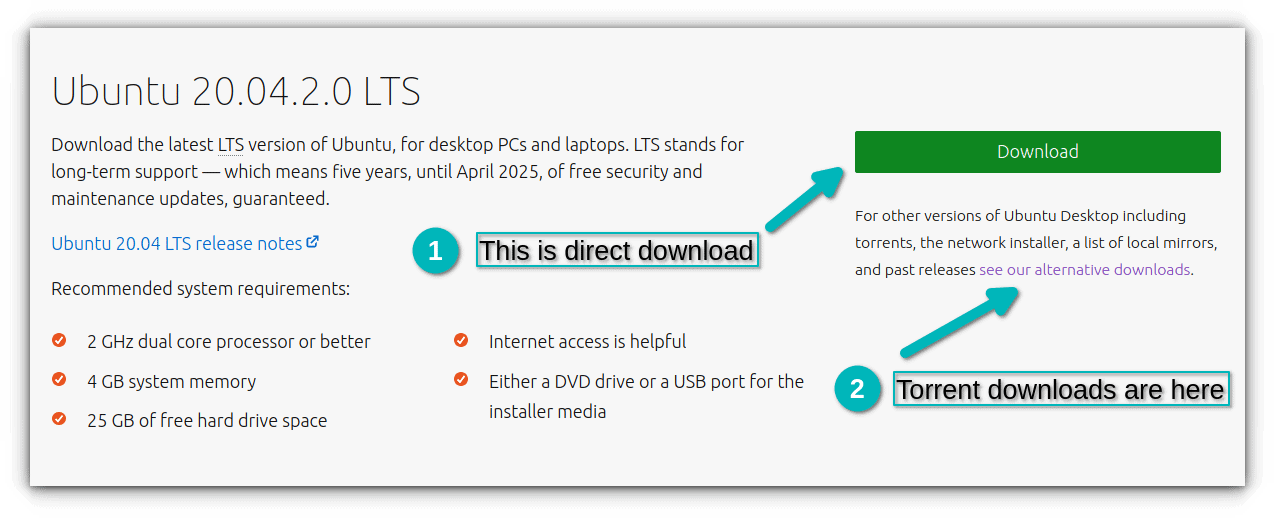
You can also download Ubuntu via torrents from the alternative downloads link on the same page.
Suggested Read 📖

Method 1: Make a live Ubuntu USB with Rufus (recommended)
Rufus is an excellent free, open-source tool for making bootable Linux USB disks. On Windows, I prefer and recommend using Rufus.
If you prefer videos to text, I have made this video to show the steps in action.
Step 1: Download Rufus
Go to the website of Rufus and download the .exe file:
This is an exe file, so you do not need to install Rufus. Just double-click on it to run it.
Step 2: Creating the live Ubuntu USB
Plug in your USB key (pen drive) to the computer. Now double-click on the download Rufus exe file, which should be in the Downloads folder.
When you run Rufus with the USB plugged in, it automatically recognizes it. If more than one USB key is plugged in, please select the correct USB under Device.
It may also automatically find the Ubuntu ISO. If not, you can always browse to the ISO by clicking on the SELECT button.
I hope you have checked the partitioning scheme and BIOS type, as I mentioned in the prerequisite section. Based on that, select the Partition Scheme and Target System in Rufus.
Everything looks good? Hit the START button.

You may be asked to choose how to write the image. Choose ‘Write in ISO Image mode’:
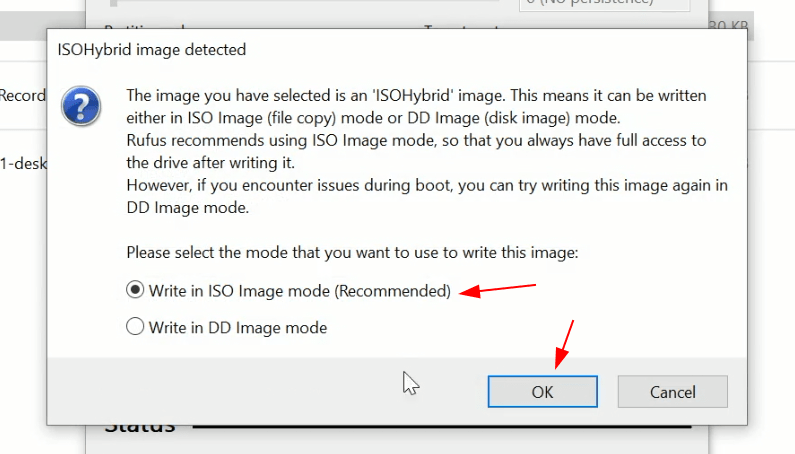
It will take a few minutes to complete the process. You’ll see a green signal when the live USB is ready.
I’ll show you how to boot from the live USB in a moment.
Method 2: Using Universal USB Installer to make bootable Linux USB
Go to the Universal USB installer project website and download the latest version of Universal USB Installer.
Plugin the USB drive in the computer and run Universal USB Installer. You need to do the following things now:
- Select Ubuntu under Step 1
- Browse to the location of the downloaded Ubuntu ISO in the Step 2 section
- In Step 3, select the USB drive and check the format option.
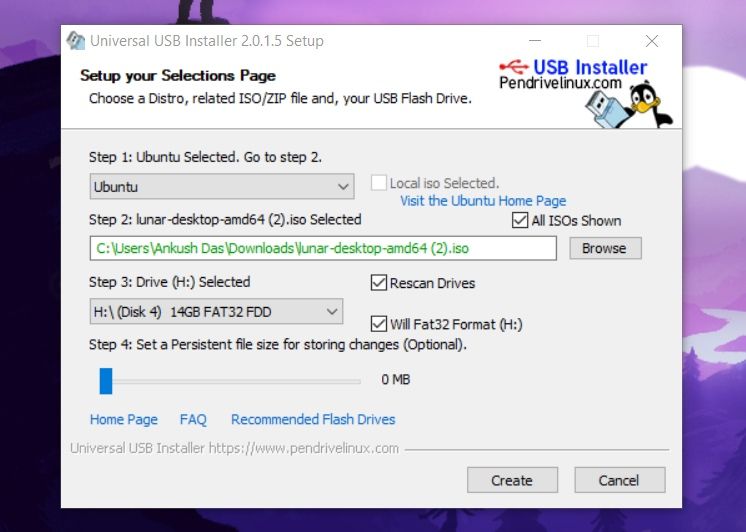
It will present you with obvious warnings; click Yes.
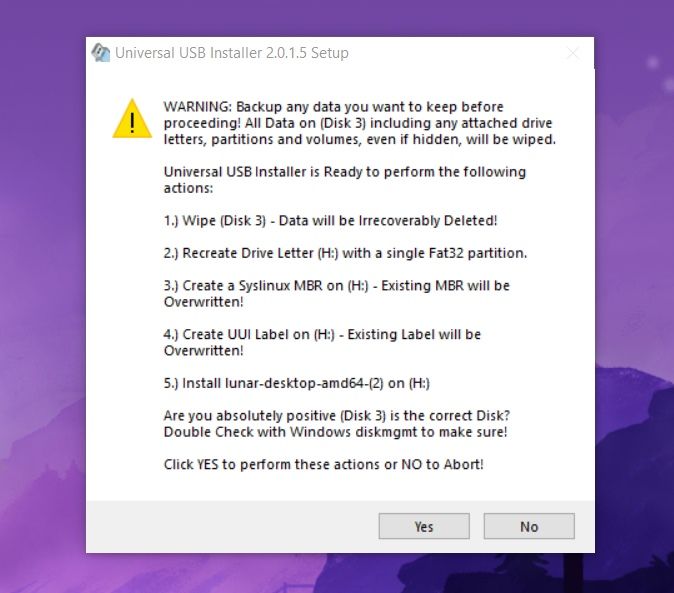
Wait for some time for the process to complete. You can push it to the background if you like.

That said, your Ubuntu USB should be created in a few minutes.
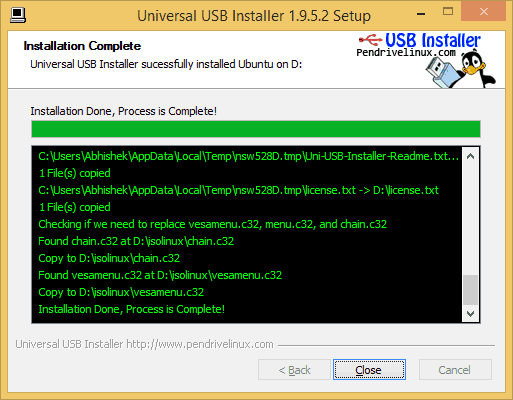
That’s it.
How to boot from live Ubuntu USB
Once the live USB is created, you can test Ubuntu in live mode. The bootable USB can be used on any system, not only on the one where you created it.
Plug in the live USB on the desired computer. What you need to do is restart or power on your computer.
At the screen that shows the logo of your system manufacturer, press the F2 or F10 or F12 key. You may try pressing all of them individually if you are unsure of the key. But be quick when you do that otherwise, it will boot into the operating system.
This key is different for different brands of computers. Some may even use Esc or Del keys for this purpose.

In rare cases, you may have to access the UEFI boot settings from within Windows.
In the BIOS settings, normally, you should see a screen like this. Here, you use the arrow keys to move down to the USB option and press enter to boot from the USB. Please note that the screen may look different in different systems.
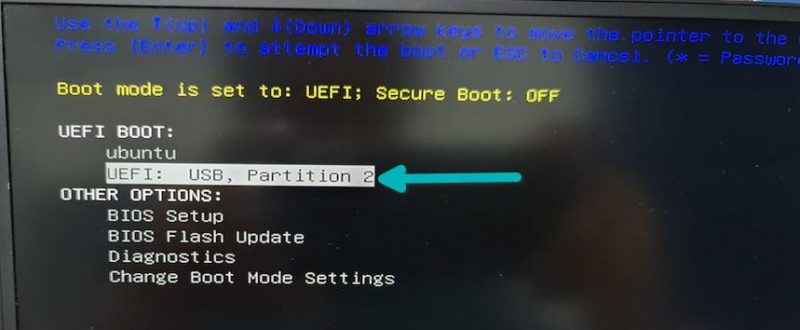
Once you boot into the USB, you will notice the grub screen with the following options:

- Try or Install Ubuntu
- Ubuntu (safe graphics)
- Test memory
You need to click on "Try or Install Ubuntu". You do not need the safe graphics option unless your graphics card has an issue working with Ubuntu or if you are debugging some issue with graphics disabled.
In case you get different options, you need to select "Try Ubuntu" to use the Live USB session and do not want to install it immediately.
Once you go ahead with the first option, it will start the live USB session.
If you like it, you can install Ubuntu after selecting the preferred language.
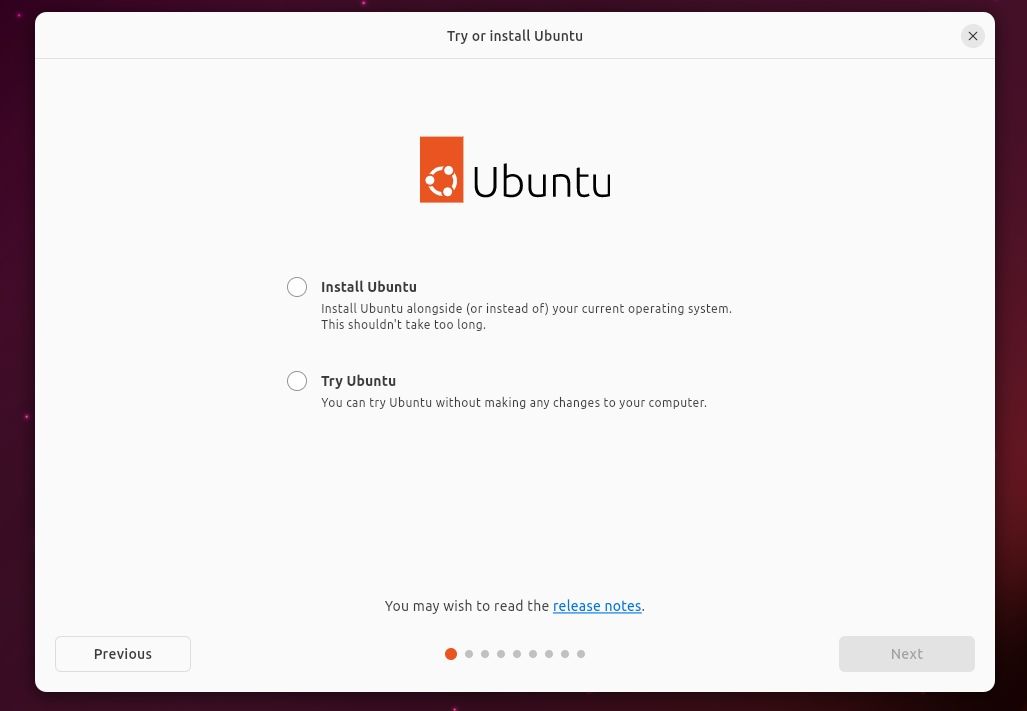
Note that if you make any changes to the live Ubuntu system, like saving some files or installing applications, your changes will be lost if you boot from the live USB again.
Please remember that some systems may not allow you to boot from a bootable USB. If you see some error (like PCIe initialization on Dell systems) or cannot boot from the USB, disable secure boot and try booting from the USB again.
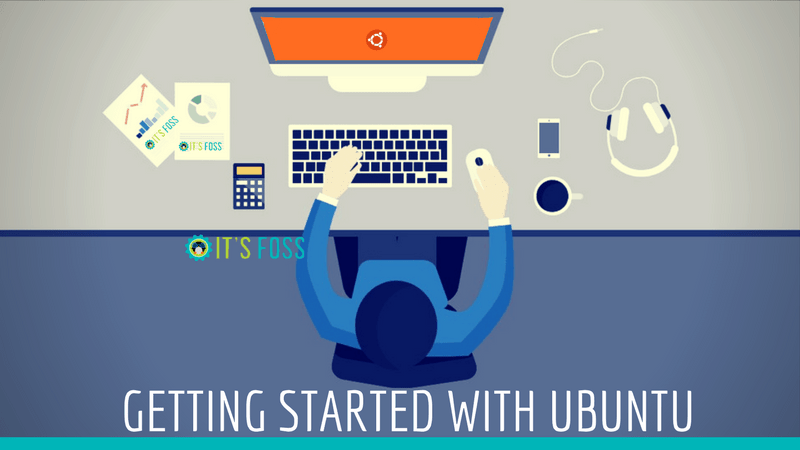
Considering that you are just starting, I advise you to follow this beginner’s guide to Ubuntu and learn how to use Ubuntu. Let me know if you need some help.


